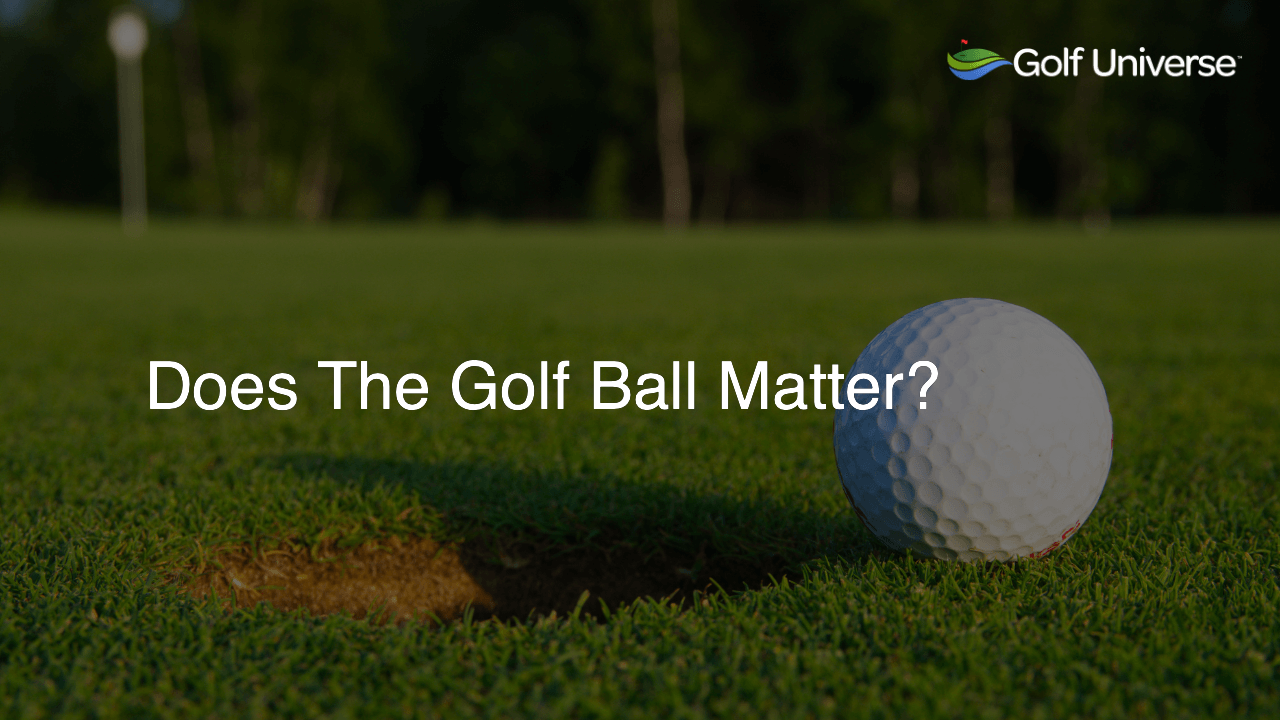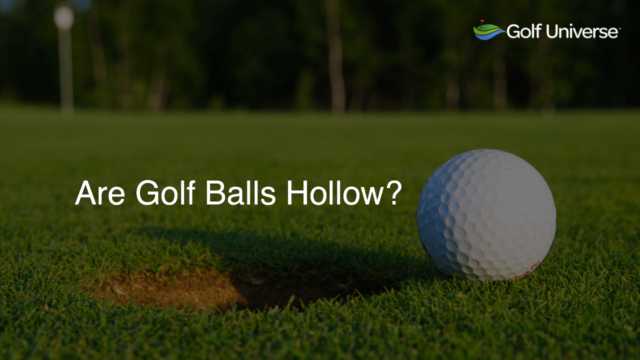Yes, the golf ball matters in the sport of golf as it significantly impacts the player’s performance. Golf balls with different construction, materials, and designs can affect aspects such as distance, trajectory, spin, and feel. Hence, it is essential for golfers to choose a ball that complements their playing style and skill level to optimize their performance on the golf course.
Understanding the Importance of Golf Ball Construction
When constructing golf balls, manufacturers use different materials and techniques, resulting in balls with varying characteristics. The construction of a golf ball is a major factor in determining its performance on the course. There are four primary golf ball types: one-piece, two-piece, three-piece, and four-piece. As the number of pieces (layers) increases, so does the ball’s complexity, subsequently affecting its performance.
One-Piece Golf Balls
One-piece balls are the simplest type of golf balls, made of a single solid material. While they are durable and inexpensive, they lack the high performance of more advanced designs. One-piece balls are best suited for beginners or for use on driving ranges for practice.
Two-Piece Golf Balls
Two-piece balls consist of a solid core (usually made of resilient material) and a cover. They are known for their long-distance capabilities and low spin rate, making them an ideal option for casual or amateur golfers seeking more distance on their shots.
Three-Piece and Four-Piece Golf Balls
More advanced balls, such as three-piece and four-piece golf balls, are designed for professional and skilled golfers. With additional layers, these balls provide better control, increased spin, and more accurate shots. The added complexity enhances players’ ability to shape their shots and adapt to various course conditions.
Selecting the Right Golf Ball for Your Game
When choosing a golf ball, consider factors like your skill level, playing style, and specific performance needs. Golfers should assess their strengths and weaknesses to determine the features most critical to their game. The following guidelines can help you make an informed decision:
Distance:
If you struggle with distance off the tee or your shots tend to come up short, consider choosing a two-piece golf ball designed for enhanced distance and reduced spin to minimize side-to-side deviation.
Control:
Skilled players often prioritize control and accuracy. In this case, opt for a three-piece or four-piece golf ball, which provides a higher spin rate for improved shot-shaping capabilities and better response around the greens.
Feel:
The feel of a golf ball can significantly impact a player’s game. Some prefer a soft feel, while others desire a firmer ball. Experiment with different types to identify which feel suits your preferences and abilities.
Final Thoughts
Although the golf ball may seem like a small detail, it can have a substantial impact on every golfer’s performance. By understanding the differences in ball construction and selecting the most suitable option based on your skills and needs, you can significantly improve your game, making the golfing experience more enjoyable and rewarding.
Why Golf Universe Believes in Customized Golf Ball Solutions
At Golf Universe, we understand the importance of selecting the perfect golf ball for your game. As avid golfers ourselves, we’ve experienced first-hand how the right golf ball can make a profound difference in terms of distance, control, and feel. We’re passionate about helping golfers of all skill levels discover the ideal golf ball to elevate their performance on the course.
Factors Affecting Golf Ball Performance
In addition to golf ball construction and layers, there are a few more factors that can affect performance, tailored to individual preferences and playing conditions:
Compression
The compression rating of a golf ball is a measure of its hardness and directly affects its feel and energy transfer. Higher-compression balls tend to feel harder and require more swing speed to achieve maximum distance, whereas lower-compression balls often feel softer and provide better distance for golfers with moderate swing speeds.
Dimple Pattern
The dimple pattern on a golf ball’s surface has an impact on its aerodynamics, which can influence distance, trajectory, and stability in different playing conditions. Golf balls come with a variety of dimple patterns, sizes, and shapes. Altering these factors can change the ball’s performance characteristics, enabling manufacturers to create golf balls tailored to specific needs.
Golf Universe – Your One-Stop Shop for Golf Balls
At Golf Universe, we are proud to offer a wide range of golf balls from top manufacturers. Our selection covers a variety of construction types, compressions, and dimple patterns, ensuring there’s a ball to suit every golfer’s needs and preferences. Furthermore, we provide expert guidance and useful advice on choosing the right golf ball.
The Golf Universe Test Drive: Finding Your Perfect Match
To further enhance your golfing experience, we recommend our exclusive “Golf Universe Test Drive” program. By participating in the program, golfers have the opportunity to test various golf balls within our facilities under real golf course conditions. This hands-on experience allows golfers to experiment with different golf ball options and find the perfect match for their game.
By taking advantage of the Golf Universe Test Drive and our wide range of golf ball options, you’ll discover the perfect ball to elevate your game and ultimately answer the question: “Does the golf ball matter?”
FAQ Section: Golf Ball Performance and Selection
In this section, we address some frequently asked questions about the importance of golf balls, their performance characteristics, and selecting the right golf ball to suit your game. Browse through these questions and their respective answers for additional information to complement the blog post content.
How does the cover material of a golf ball impact its performance?
The cover material of a golf ball can influence spin rate, durability, and control around the greens. Urethane covers typically provide a softer feel and higher spin rate, making them suitable for skilled players seeking optimal control. Surlyn covers are more durable and offer less spin, making them ideal for players focused on distance and durability.
What factors should I consider when selecting a golf ball based on my swing speed?
Golfers with high swing speeds (typically over 105 mph) should consider using high-compression golf balls to maximize energy transfer and distance off the tee. Players with moderate or slow swing speeds should opt for lower-compression balls for better distance and a softer feel.
How often should I change or replace my golf balls?
The frequency with which you should replace your golf balls depends on their condition and your preference for ball performance. If your golf ball shows signs of wear, such as cuts, scuffs, or discoloration, it’s time to replace it, as such damage can affect its performance. Competitive golfers may replace their balls more frequently, sometimes after every round, while casual players might wait longer before switching to new balls.
Do I need a greater number of layers in a golf ball as my skill level improves?
As your skill level improves, you may benefit from the additional control, accuracy, and shot-shaping capabilities offered by multi-layered golf balls. However, the ideal golf ball for you depends on your individual playing style, strengths, and preferences, so it’s crucial to try different balls and find the one that works best for your game.
The choice between premium or affordable golf balls depends primarily on your skill level and budget. Premium golf balls typically provide better control, spin, and feel but come at a higher price point. Casual or beginner golfers can achieve satisfactory performance with more affordable options, while low handicappers and professionals may prefer the advanced characteristics of premium golf balls.











